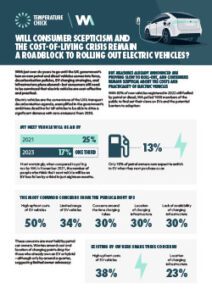There’s no denying the power of a good statistic. If 95% of customers are satisfied with a product, it’s hard to imagine how you wouldn’t be too. For that reason, numbers—and the quantitative (numerical) research that underpins them—are often vital in convincing communications.
But evidence comes in more forms than just numbers, and research can be communicated through more than just statistics and charts. For a message to truly leave a mark, there is an important role for words, and more specifically, stories.
The science behind stories
Humans may like a good statistic, but we love a good story. That’s because we are social beings—we communicate, relate to, and sympathise with other people through storytelling.
The response is neurological: research by neuroeconomist Paul Zak has found that character-driven stories trigger our brains to synthesise oxytocin, a chemical that enhances our sense of empathy and motivates cooperation.[1] When this happens, we become more trustworthy, charitable, and compassionate.[2]
The implications are important. Zak’s research reveals that character-driven, emotional stories ‘result in a better understanding of the key points a speaker wishes to make and enable better recall of these points weeks later.’[3] More than just a memory aid, stories can also produce more generous responses by triggering oxytocin synthesis. Another experiment found participants who received oxytocin before viewing public service advertisements donated 56% more money to 57% more causes than those who did not.[4]
In short, human stories influence our brains in a way which makes their messages more memorable, engaging, and well-received. Who doesn’t want that?
Accessing human stories through research
The wonderful thing about qualitative (non-numerical) research is there are so many sources that can be drawn upon—billions, in fact.
As researchers, we gain access to the world’s endless trove of stories by asking the right questions, to the right people, through the right methods. Propelled by our own innately human attraction to stories, we employ free-text questions in surveys, focus groups, in-depth interviews, online research communities, and observation to unearth the experiences of those who matter most (whoever they may be). With these rich insights to hand, we are equipped to develop the kind of ‘character-driven’ case studies that Paul Zak’s research proves are most impactful.
Data persuades, stories compel
Ultimately, the best research outcomes often involve a mix of both quantitative and qualitative methods. The quantitative serves to show the overall picture on a large scale and lend legitimacy through replicable evidence, while the qualitative reveals the emotive side of the story and brings the data to life with authentic examples that will draw people in. What’s more, it is this emotive narrative that attracts media attention, with journalists far more likely to build a story around a person, with the statistics in the background, than the other way round.
At WA Research, our expertise in quantitative and qualitative research means we know how to maximise the potential of both approaches, on their own and in tandem. Get in touch to discuss how our research capabilities can deliver evidence-based results and stories that will have a genuine impact on your audience (and their brain chemicals).
[1] Paul J. Zak, ‘Why Your Brain Loves Good Storytelling,’ Harvard Business Review, 28 October 2014, https://hbr.org/2014/10/why-your-brain-loves-good-storytelling.
[2] Paul J. Zak, ‘How Stories Change the Brain,’ Greater Good Magazine, 17 December 2013, https://greatergood.berkeley.edu/article/item/how_stories_change_brain.
[3] Zak, ‘Why Your Brain Loves Good Storytelling.’
[4] Pei-Ying Lin et al., ‘Oxytocin Increases the Influence of Public Service Advertisements,’ PLoS ONE 8, no. 2 (February 2013), https://doi.org/10.1371/journal.pone.0056934.
